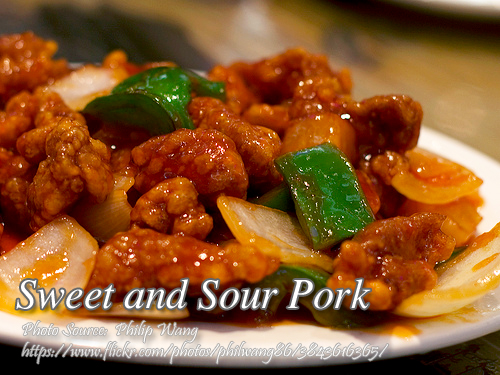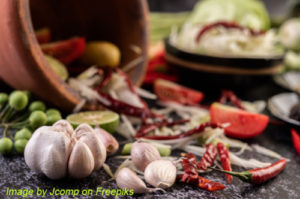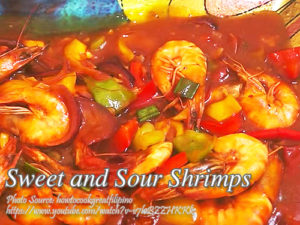This recipe is easy to cook and it is restaurant type of dish. It is served in some Chinese restaurants or fastfood chains. Sweet and sour pork is very similar to fish escabeche or sweet and sour fish style of cooking. Cooking this dish is quite simple and you will only need a ordinary cooking skill to cook this dish.
A Family Favorite Made Easy
When I think of comfort food that brings everyone around the dinner table, this dish always comes to mind. Growing up, my family had a love for Chinese-inspired dishes, and this tangy pork stir-fry was one we enjoyed on special occasions. In fact, it was my lolo (grandfather) who first introduced me to this delicious dish, and his method has stuck with me ever since. Over time, I’ve made a few tweaks based on my aunt’s tips, but the essence remains the same—an irresistible balance of sweet, tangy, and savory flavors.
A Quick Dive into the Origins of Sweet and Sour Flavors
Before diving into the cooking process, let’s talk a little about the history behind this dish. Sweet and sour flavor combinations can be traced back to ancient China, where they were often used to enhance the taste of various meats and fish. The popularity of this flavor spread globally, and today, it’s a favorite in Chinese restaurants all over the world. This pork version has made its way into homes as a beloved family recipe, with each household putting their own spin on it—mine included.
Similar to dishes like escabeche, a Filipino dish often made with fish, this tangy pork recipe follows the same idea of creating a contrast between sweetness and acidity. It’s no surprise that both dishes have a special place in Filipino celebrations.
The Secret to Tender, Flavorful Pork
One of the biggest lessons I learned from my lolo was that the key to making this dish perfect lies in how you prepare the meat. He would always say that you can’t rush cooking good pork. He was right. The process starts with cutting the pork into small, bite-sized pieces, which helps each piece soak up the flavors more easily. Then, instead of frying the pork right away, he’d boil it in just enough water with a pinch of salt to tenderize it. This simple step ensures that your pork is juicy, rather than tough and dry, once you fry it later.
Once the pork is tender, I coat each piece in a light dusting of flour, giving it that satisfying crunch when fried to golden perfection. The crispy exterior of the pork complements the sticky sauce that comes later.
Building Layers of Flavor with Vegetables and Sauce
As much as this dish is about the pork, it’s equally about the vibrant mix of vegetables and the sauce that brings everything together. In my version, I always use fresh garlic, tomatoes, celery, bell peppers, and carrots. My aunt swears by sautéing them just until they’re half-cooked, a technique that ensures the vegetables keep their crunch and don’t turn mushy in the sauce. The combination of these vegetables adds a natural sweetness, as well as color and texture, to the dish.
Now, here’s where the magic happens. The sauce is a blend of tangy and sweet elements that elevate the dish to another level. I use a generous helping of ketchup (yes, you read that right), which gives it a hint of sweetness and a lovely reddish hue. Then, I pour in the pineapple tidbits along with their syrup, which adds a refreshing fruity sweetness that balances out the acidity from the tomatoes. The broth from boiling the pork earlier? Don’t throw it away! It’s what gives the sauce its deep, savory undertone, bringing everything together.
Finally, I thicken the sauce with a bit of cornstarch. This creates a glossy, rich coating that clings to every piece of pork. The first time I tried my aunt’s tip of using cornstarch to thicken the sauce, I couldn’t believe how much it improved the texture. It makes the dish feel like something you’d order at a restaurant.
Bringing it All Together
Once the sauce is thickened to perfection, pour it over your fried pork pieces, making sure each piece is well coated. Trust me when I say, this dish never fails to impress. The first bite will greet you with a crunch from the fried pork, followed by the tangy sweetness of the sauce. The pineapples add a delightful surprise of sweetness in every bite, while the vegetables provide a light and refreshing contrast.
For an extra touch, I like to serve it with freshly steamed rice. There’s something about the way the sauce soaks into the rice that just makes everything taste even better.
A Few Tips for Beginners
If you’re making this for the first time, don’t be intimidated. It’s a simple dish that doesn’t require fancy ingredients or techniques. Just remember a few key things:
- Boil the pork before frying to keep it tender.
- Don’t overcook the vegetables—three minutes is all it takes.
- Thicken the sauce with cornstarch to get that perfect restaurant-quality glaze.
Once you get the hang of it, this dish can easily become a regular in your meal rotation. It’s the kind of dish that brings people together, whether it’s a casual family dinner or a gathering with friends. Plus, the leftovers (if there are any) taste even better the next day!
Why This Dish Will Never Go Out of Style
Whether you’ve enjoyed this dish at a restaurant or made it at home, it’s easy to see why it has stood the test of time. Its flavor is universally loved, and it offers a perfect balance of sweet and tangy that is just plain satisfying. For me, it’s more than just a dish—it’s a reminder of family, tradition, and the joy of cooking. From my lolo’s kitchen to yours, I hope this pork dish becomes a family favorite in your home too.
How to Cook Sweet and Sour Pork
Ingredients
- 1/2 kilo lean pork
- 1 large size onion quartered
- 3 pcs tomatoes quartered
- 1 pc carrot strips, 2" long
- 2 pcs bell pepper red & green (strips)
- 2 stalks celery 1 1/2" long
- 3 to 4 cloves garlic minced
- 1 small can pineapple tidbits
- 1 cup catsup
- 1 Tbsp soy sauce
- 1 Tbsp cornstarch
- 2 Tbsp flour
- 1 Tbsp salt
- 1 tsp MSG
Instructions
How to cook Pork in Sweet Sour Sauce:
- Cut pork into small serving pieces. Boil in 1 and 1/2 cup water with a little salt. When tender, drain.
- Set aside broth to be used later. Sprinkle flour on pork. Fry until golden brown. Sauté minced garlic until brown.
- Add altogether onion, tomatoes, celery, carrot, and pepper strips. Stir. After 3 minutes or until half-cooked, add catsup, pineapple tidbits (with syrup), and broth.
- Season with soy sauce and MSG. Do not overcook the vegetables. Thicken with dissolve cornstarch. When it boils pour over fried pork.
Notes
Cooking Tips:
Boil the Pork for Tenderness
Before frying, boil the pork in salted water until tender. This step ensures that the meat remains juicy and soft even after frying. Skipping this can result in tough, dry pork that won’t absorb the sauce as well.Fry Until Golden and Crispy
Lightly coat the pork pieces with flour and fry them until they achieve a golden, crispy texture. The crunchy exterior will complement the sticky sauce and give the dish a satisfying bite. Make sure not to overcrowd the pan to keep the pork crispy.Use Cornstarch for a Perfect Sauce
Thickening the sauce with dissolved cornstarch is essential for a glossy, restaurant-style finish. Stir the mixture continuously as it boils to prevent clumps and ensure a smooth texture. This step helps the sauce cling beautifully to the pork without becoming too runny.






additional info.. @ rose bruner.. Mono sodium glutamate is the vet chin in layman’s term,..
nice…
sana may mga bagung recipe pa kayo na ok lutuin dito sa UAE
sobrang mahilig kasi akung mag luto kaso lang di na fresh ang pork dito
kaya parang di ako na sasarapan sa mga niluluto ko.
at parang iba din ang lasa ng karne ng baka dito napansin ko lang.
Thanks Rose for posting, MSG means Mono Sodium Glutamate.
I’m not a good cook… I am very interested to cook Pork in Sweet Sour Sauce soon….. but there’s one ingredient which i dont understand the word MSG. What is the meaning of MSG?
Appreciate your quick reply. Thanks.